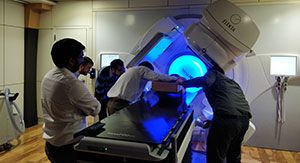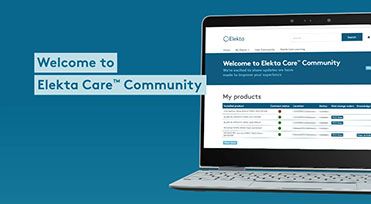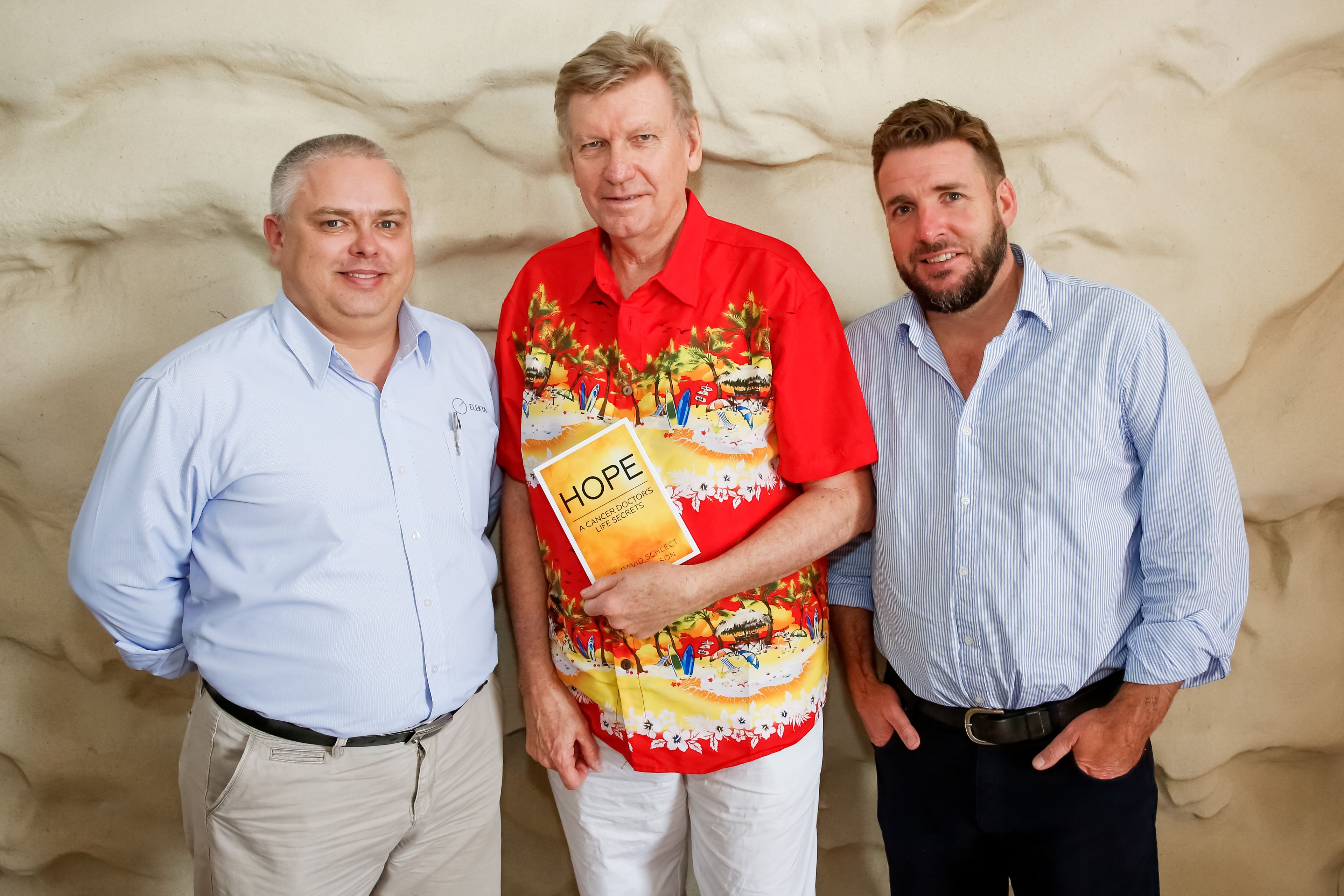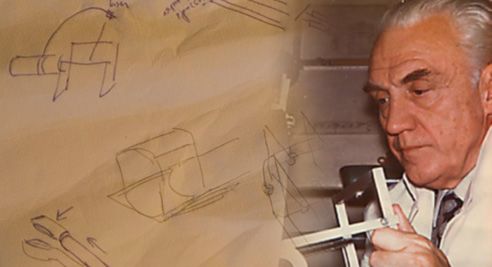The Cornerstone of innovation
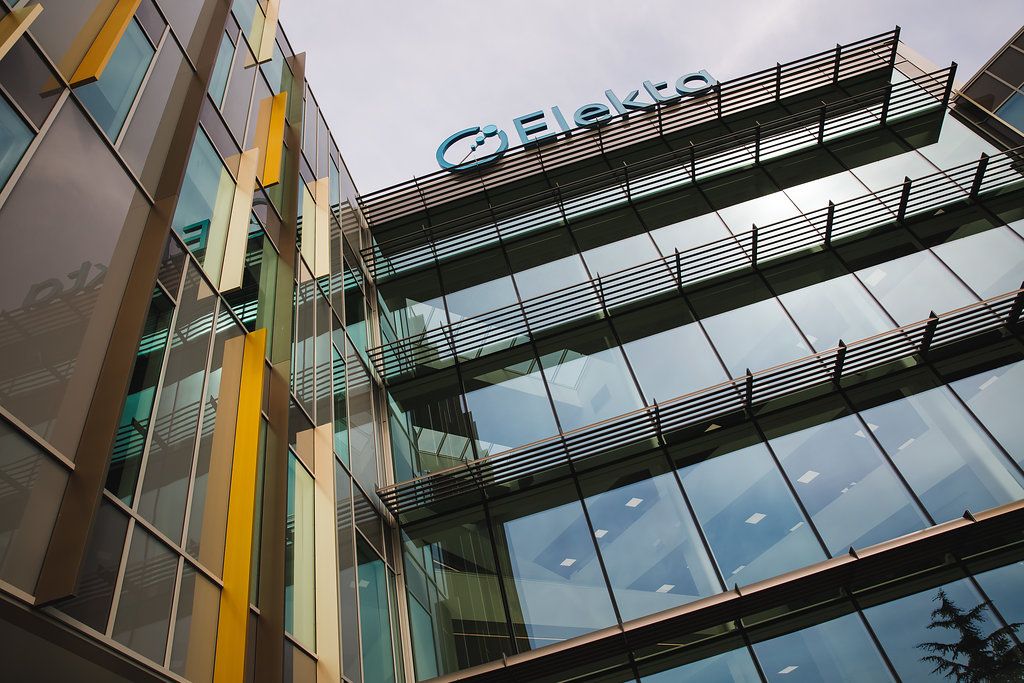
Elekta celebrates inauguration of new global radiotherapy facility for developing next generation cancer treatment solutions
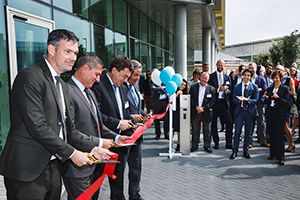
Approximately 350 Elekta employees, in addition to national and local political figures and distinguished guests, convened in Crawley, UK, to preside over the unveiling of Elekta’s new Cornerstone center. Designed to serve as a magnet for oncology innovation in the coming decades, the ribbon-cutting ceremony cemented Crawley’s reputation as a world-leading hub for the development of precision radiotherapy technologies since the late 1950s.
“More than 350 of our current Crawley staff of 750 employees are dedicated to innovation, so the imperative was to create an international innovation campus,” says Elekta President & CEO, Richard Hausmann. “The Cornerstone facility will draw world-class clinicians and scientists to collaborate with us on new ideas and treatment concepts in oncology. And, it will be a rich learning environment – a classroom for clinicians on how to implement and operate the latest Elekta technologies.”
Construction of the 150,000 square foot Cornerstone building began in 2016 and occupies a five-acre plot on Elekta’s full campus. The design of Cornerstone incorporates the latest in architectural and environmental design, including spacious, modern, flexible floor spaces to allow large multinational project teams to be accommodated on single floors. (See additional Cornerstone Stats)
“This new facility has already changed the way we work, thanks to the inspiring interior and exterior design,” says Steve Wort, Elekta Chief Operating Officer. “We take time to talk to each other face-to-face and there is a new energy and passion that Cornerstone is instilling in our professionals.
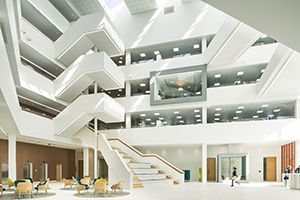
“Cornerstone will serve as home to 750 employees comprising engineers, scientists, clinicians and customer-facing professionals,” he adds. “This diverse group shares a commitment to give hospitals and care providers the technologies they need to improve the lives of people with cancer. As a group, they will be able to interact with healthcare providers visiting from anywhere in the world, as they jointly collaborate and share ideas on technological solutions for addressing the global cancer burden. We see radiotherapy playing an outsized role in meeting that challenge.” (See sidebar: “Importance of radiotherapy grows as world cancer incidence rises”)
Also in attendance was Torbjörn Sohlström, the Swedish Ambassador to the United Kingdom.
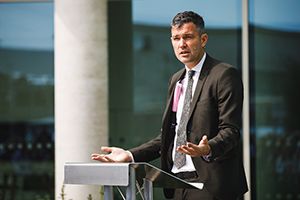
“Sweden and the United Kingdom have a long and fruitful history of collaboration in many business and diplomatic endeavors,” Sohlström says. “Cornerstone is just the latest example of what can be accomplished when we share a common goal, in this case, the effort to improve the lives of cancer patients by developing vital technologies for those on the front lines providing care.”
Tours to showcase advanced Elekta solutions
Included in the inauguration events were guided tours of Cornerstone, featuring working examples of key Elekta technologies, such as Versa HD™, the world’s most advanced linear accelerator and Elekta Unity, the company’s groundbreaking high field MR-linac.
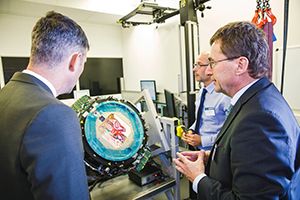
More than 60 years ago the world’s first digital linear accelerator was developed and built at the company’s Crawley hub. The original Crawley facility maintains its preeminence in radiotherapy production and, to date, about 4,800 current model linacs have been manufactured in Crawley, of which more than 2,000 were built in the last seven years. It should also be noted that Elekta was the first company to integrate sophisticated image guidance in its linacs and developed Agility MLC here, the market’s highest performing beam shaping device. Elekta’s latest ground-breaking contribution to Crawley’s reputation for radiotherapy innovation is the company’s Elekta Unity MR-linac, which was developed at the Crawley hub.
Elekta Unity integrates the precision application of therapeutic radiation with the unsurpassed image quality of high field (1.5 Tesla) magnetic resonance. This hybrid technology gives doctors the ability to “see what you treat” while the radiation beams are being delivered, thus enabling clinicians to adapt the treatment in real time.
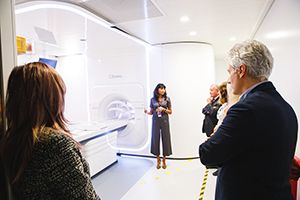
“By integrating MR, Unity allows physicians to locate and track tumors and surrounding tissue with extreme accuracy at the time of treatment,” Hausmann explains. “Clinicians can therefore fine-tune and modify the treatment plan while the patient is in the treatment position in response to changes in tumor position, shape and biology. Elekta Unity truly represents a new radiotherapy paradigm that permits a scan-plan-treat approach, and supports care strategies that are designed for the unique needs of individual patients.”
On August 22, doctors at University Medical Center Utrecht in the Netherlands began treating cancer patients with the now CE-marked Unity system. Additional clearances are expected in the coming months for other regions of the world.
Cornerstone Stats
- Among the largest office atriums in South East UK
- Area of glass: approximately 4,758 meters (approx. 51,200 sq. ft.)
- Number of floors: 5
- Weight of concrete: approximately 8,900 tonnes (excluding piles)
- Amount of concrete: 3,900 cubic meters (105,300 cu.ft.)
- Hours to complete: 250,000
- Ductwork: approximately 2,500 linear meters (8,200 lin. ft.)
- Meeting rooms: 58
- Training rooms: 13
- Car park spaces: 414
Importance of radiotherapy grows as world cancer incidence rises
In most regions of the world, cancer is a leading cause of death and morbidity, with approximately 18.1 million new cases and 9.6 million cancer-related deaths in 2018. In both sexes combined, lung cancer is the most commonly diagnosed cancer (11.6% of the total cases) and the leading cause of cancer death (18.4% of the total cancer deaths), closely followed by female breast cancer (11.6%), prostate cancer (7.1%), and colorectal cancer (6.1%) for incidence and colorectal cancer (9.2%), stomach cancer (8.2%), and liver cancer (8.2%) for mortality. [1]
Fifty to 60 percent of cancers are treated with radiotherapy, often in combination with other types of therapy, such as surgery and chemotherapy. The modality is primarily used to treat cancers of the prostate, breast, lungs, head-and-neck, cervix, pelvis, brain and metastatic disease, which is cancer that has spread from one part of the body to another. Radiotherapy is used for curative (~70 percent) as well as palliative treatments to relieve pain and improve quality of life. It is estimated that half of all cancer patients would benefit from radiotherapy of localized disease, local control and palliation.[1-2]
Elekta Unity has CE mark and 510k clearance but is not available in all markets.
